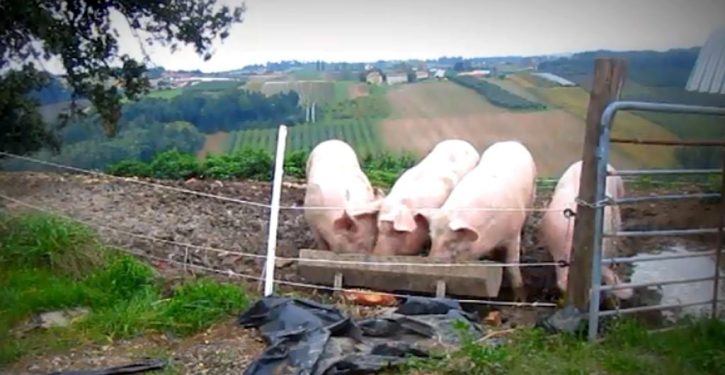
Hipsters tell their fellow city-dwellers to eat food that is “locally grown.” But that is bad for the environment, because farmers in the countryside grow more food more efficiently with less greenhouse gas emissions than urban gardens. Sci Tech Daily discusses this in “Green Menace? Study Finds Food From Urban Agriculture Has 6x Larger Carbon Footprint”:
Urban agriculture….has a carbon footprint considerably higher than conventional farming, according to a University of Michigan-led study….fruits and vegetables grown in urban farms and gardens have a carbon footprint that is, on average, six times greater than conventionally grown produce…
Urban agriculture, the practice of farming within the confines of a city, is becoming increasingly popular worldwide and is touted as a way to make cities and urban food systems more sustainable….
The new U-M-led study…used data from 73 urban farms and gardens in five countries and is the largest published study to compare the carbon footprints of urban and conventional agriculture.
Three types of urban agriculture sites were analyzed: urban farms (professionally managed and focused on food production), individual gardens (small plots managed by single gardeners), and collective gardens (communal spaces managed by groups of gardeners).
For each site, the researchers calculated the climate-altering greenhouse gas emissions associated with on-farm materials and activities over the lifetime of the farm. The emissions, expressed in kilograms of carbon dioxide equivalents per serving of food, were then compared to foods raised by conventional methods.
On average, food produced through urban agriculture emitted 0.42 kilograms of carbon dioxide equivalents per serving, six times higher than the 0.07 kg CO2e per serving of conventionally grown produce….
“Most of the climate impacts at urban farms are driven by the materials used to construct them—the infrastructure….These farms typically only operate for a few years or a decade, so the greenhouse gases used to produce those materials are not used effectively. Conventional agriculture, on the other hand, is very efficient and hard to compete with.”
For example, conventional farms often grow a single crop with the help of pesticides and fertilizers, resulting in larger harvests and a reduced carbon footprint when compared to urban farms.
“Locally grown” food is often not as good for the environment as food imported from thousands of miles overseas. Lamb raised in New Zealand has a much smaller carbon footprint when eaten by consumers in England, than lamb raised right near their local restaurant. It is just much more efficient to raise lamb in New Zealand than in densely populated countries or places that lack high-quality pastures, even if the lamb has to be shipped thousands of miles to those who consume it.



